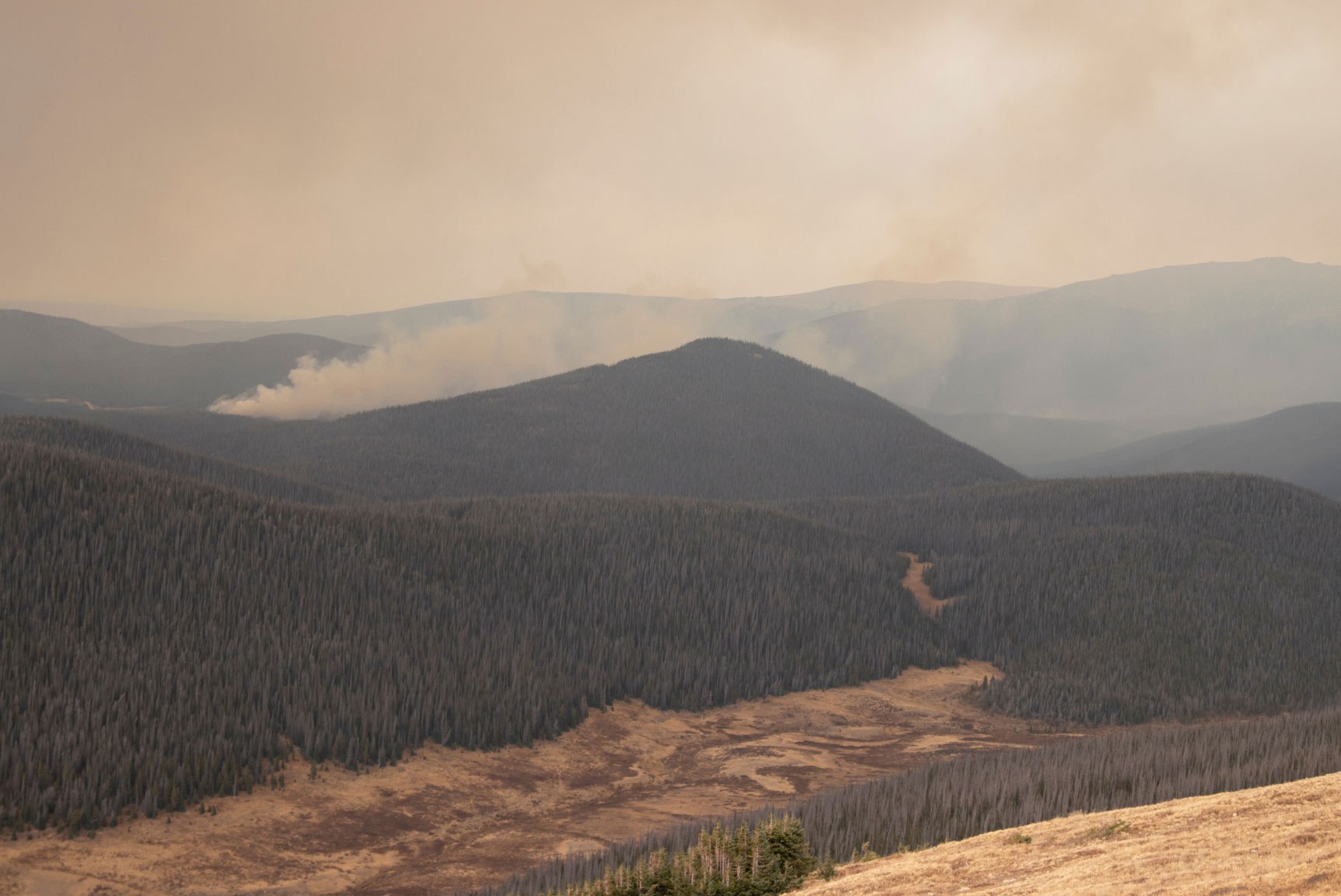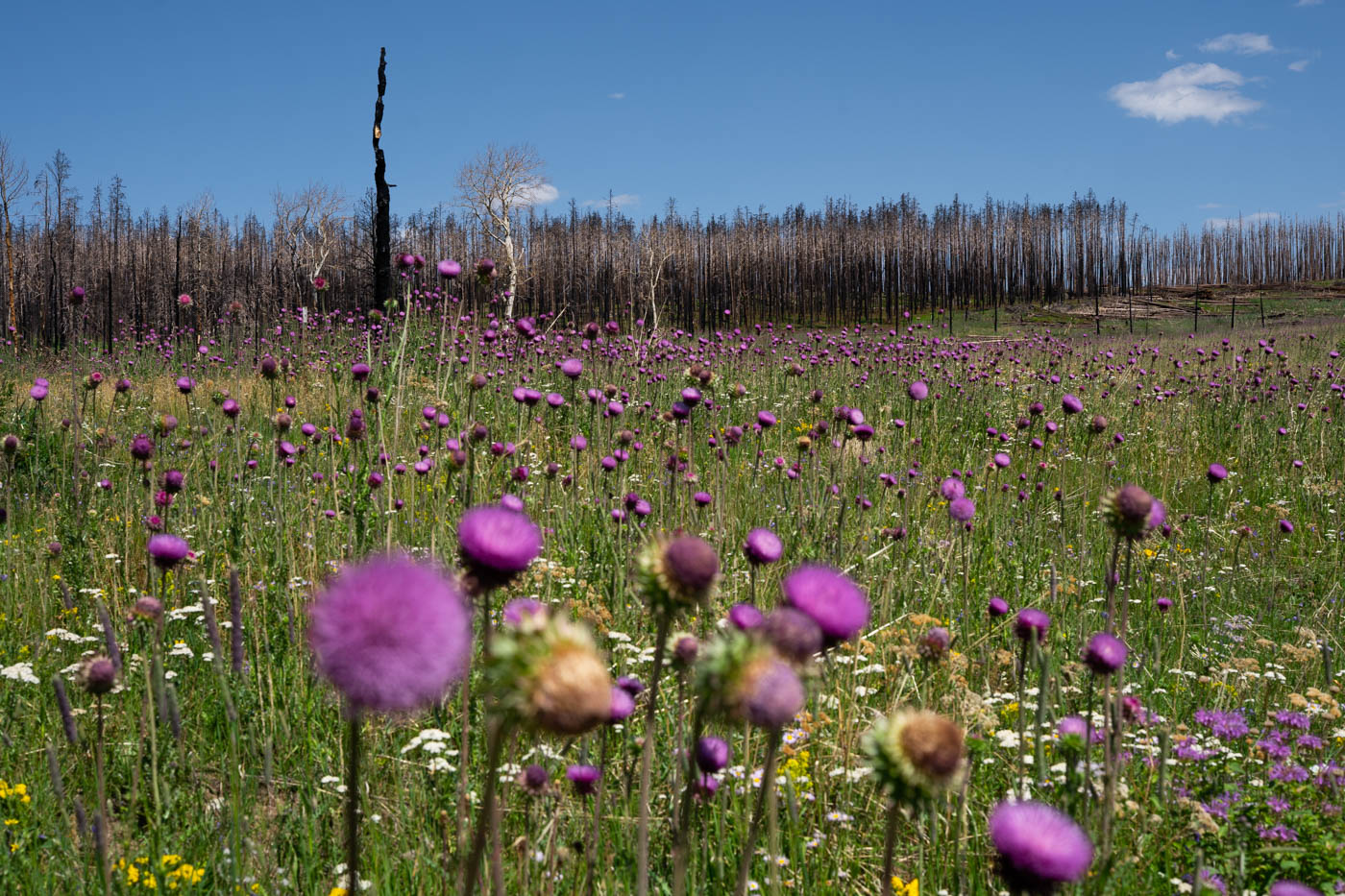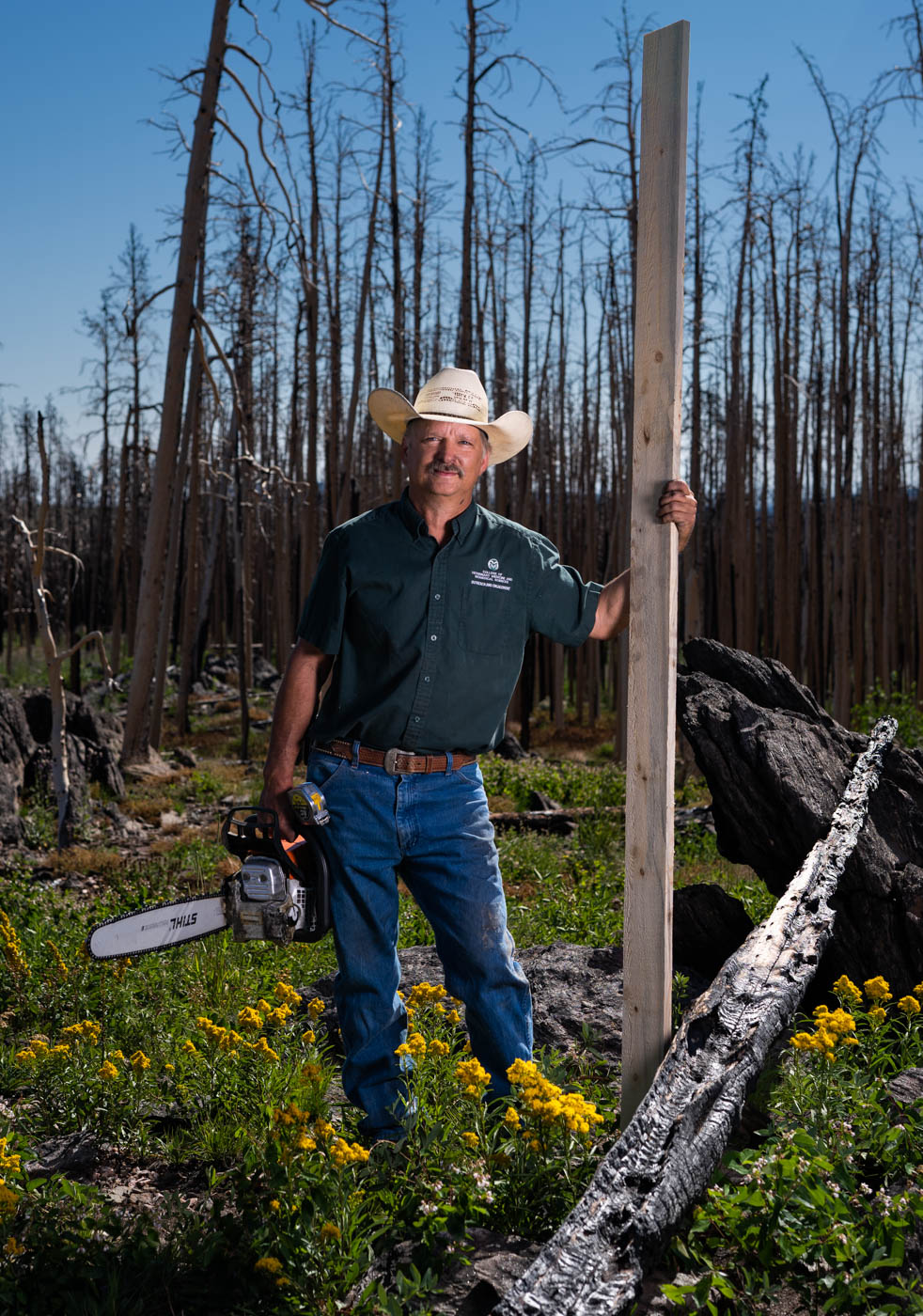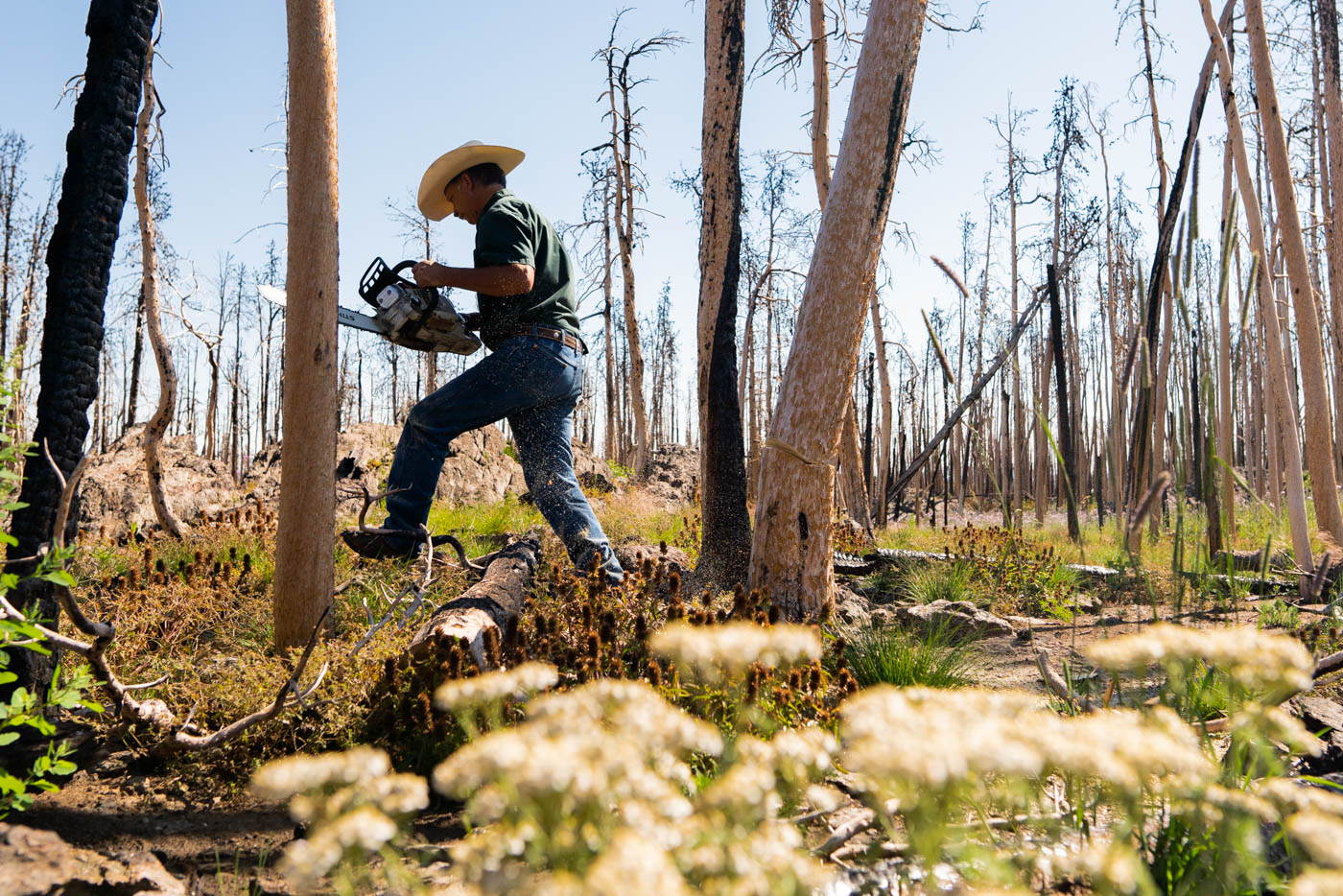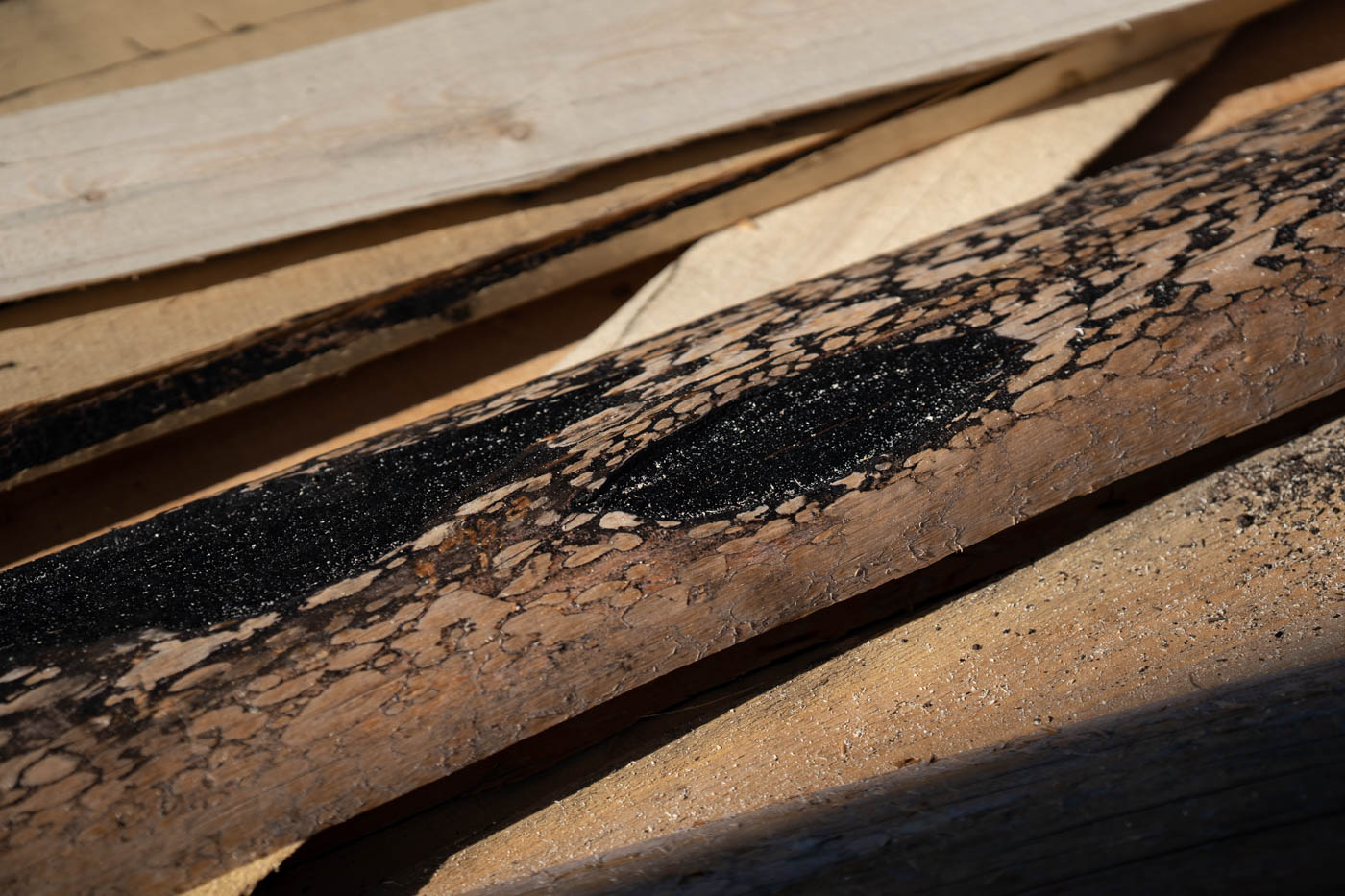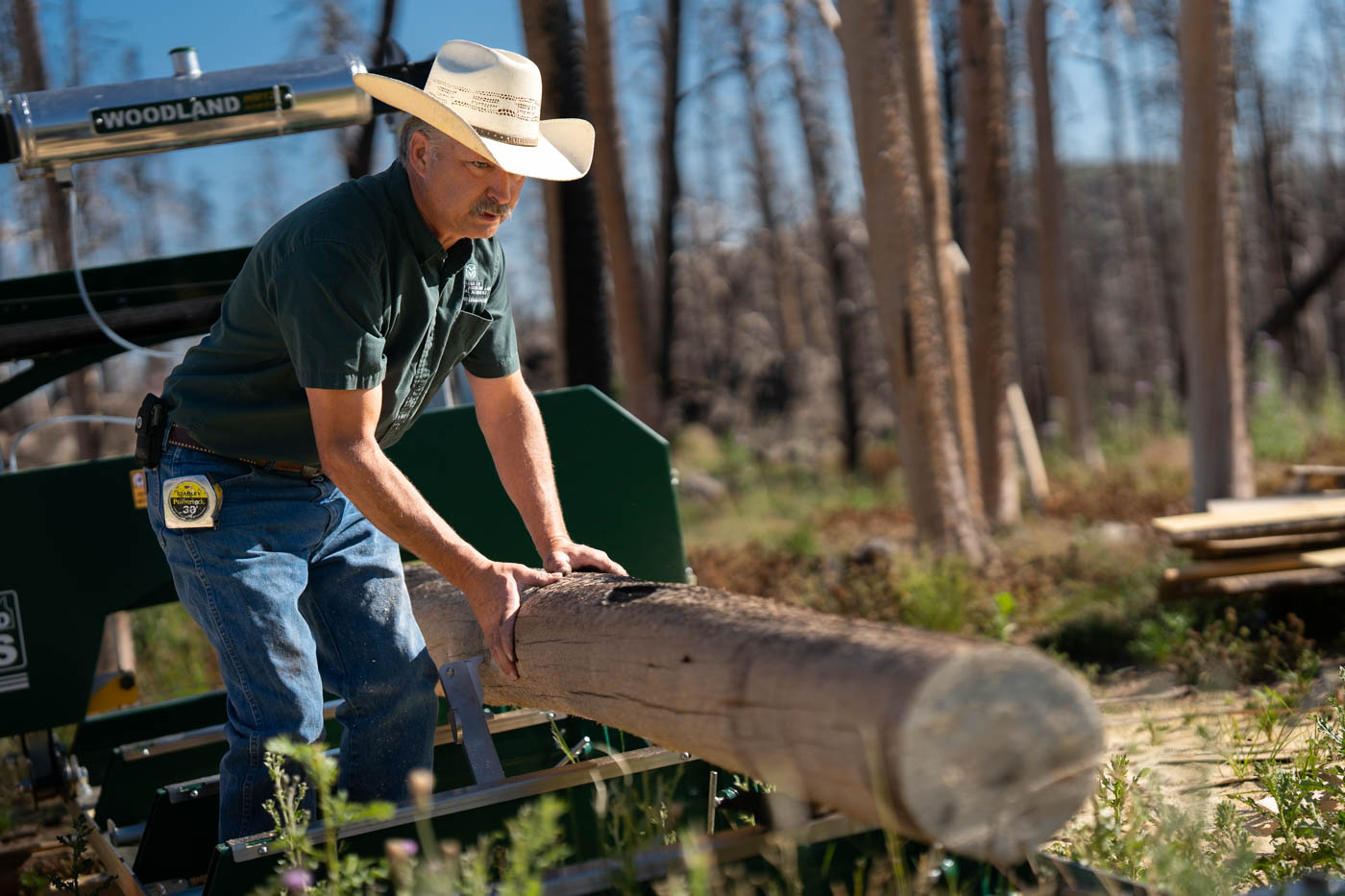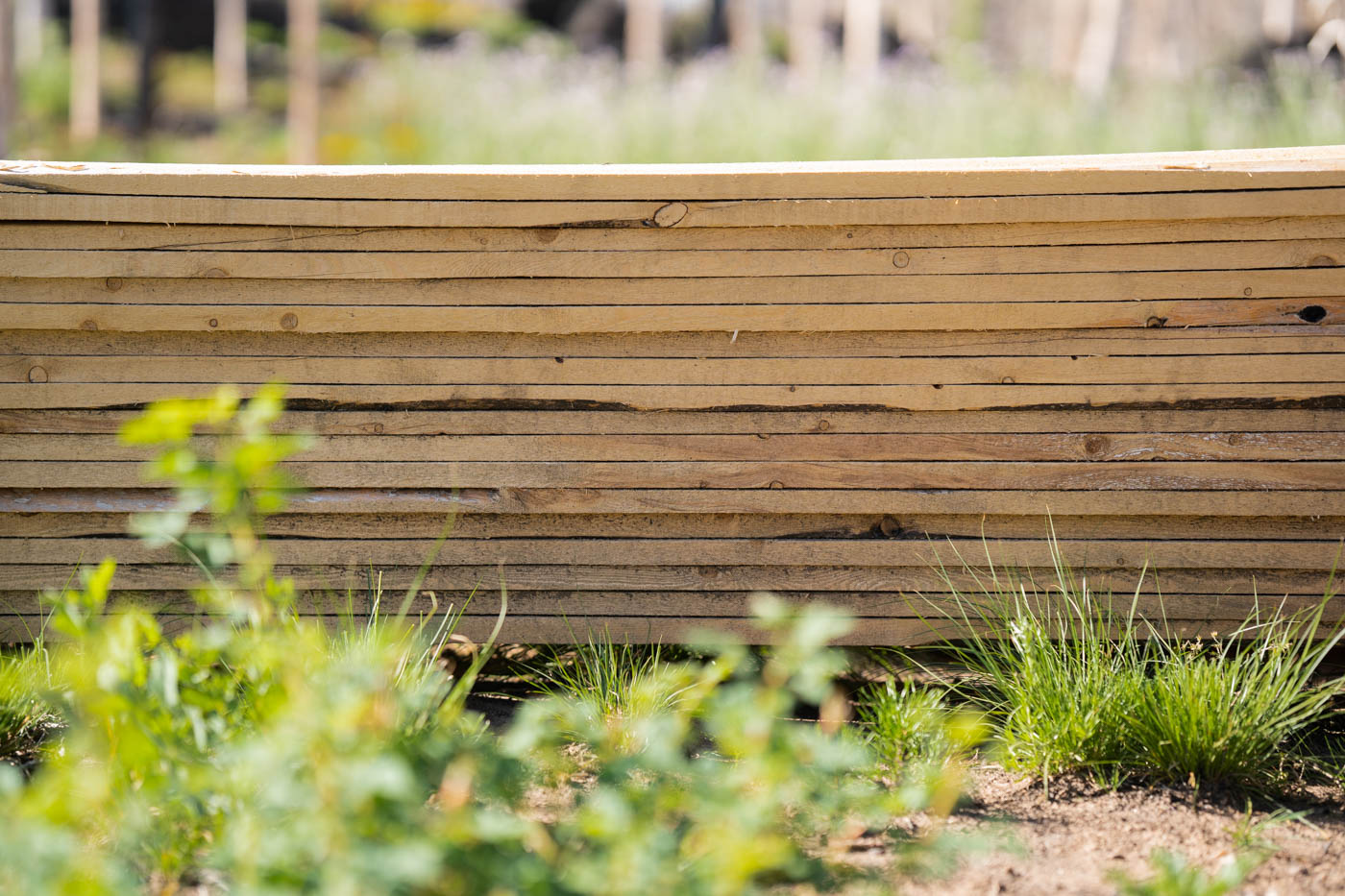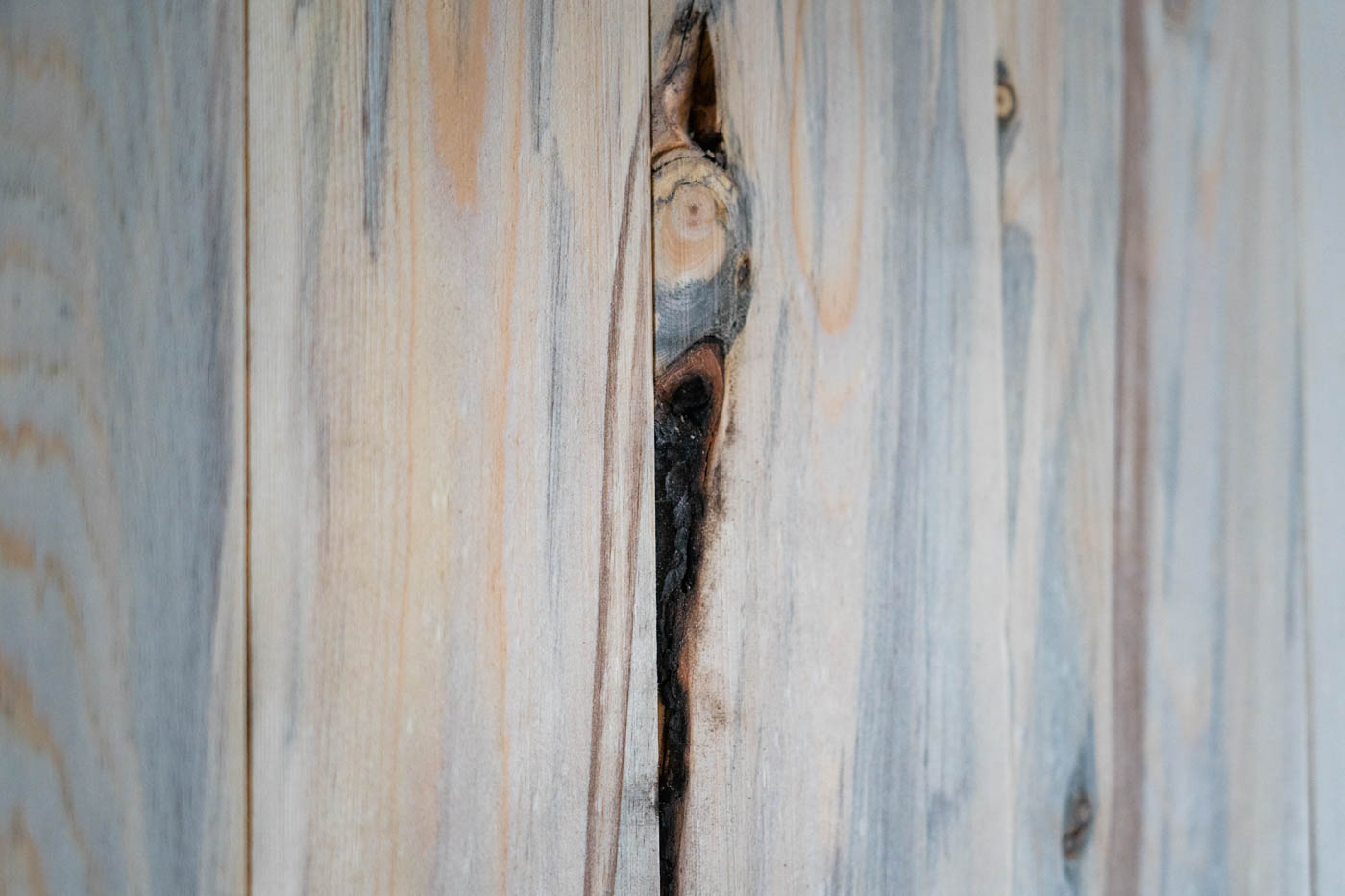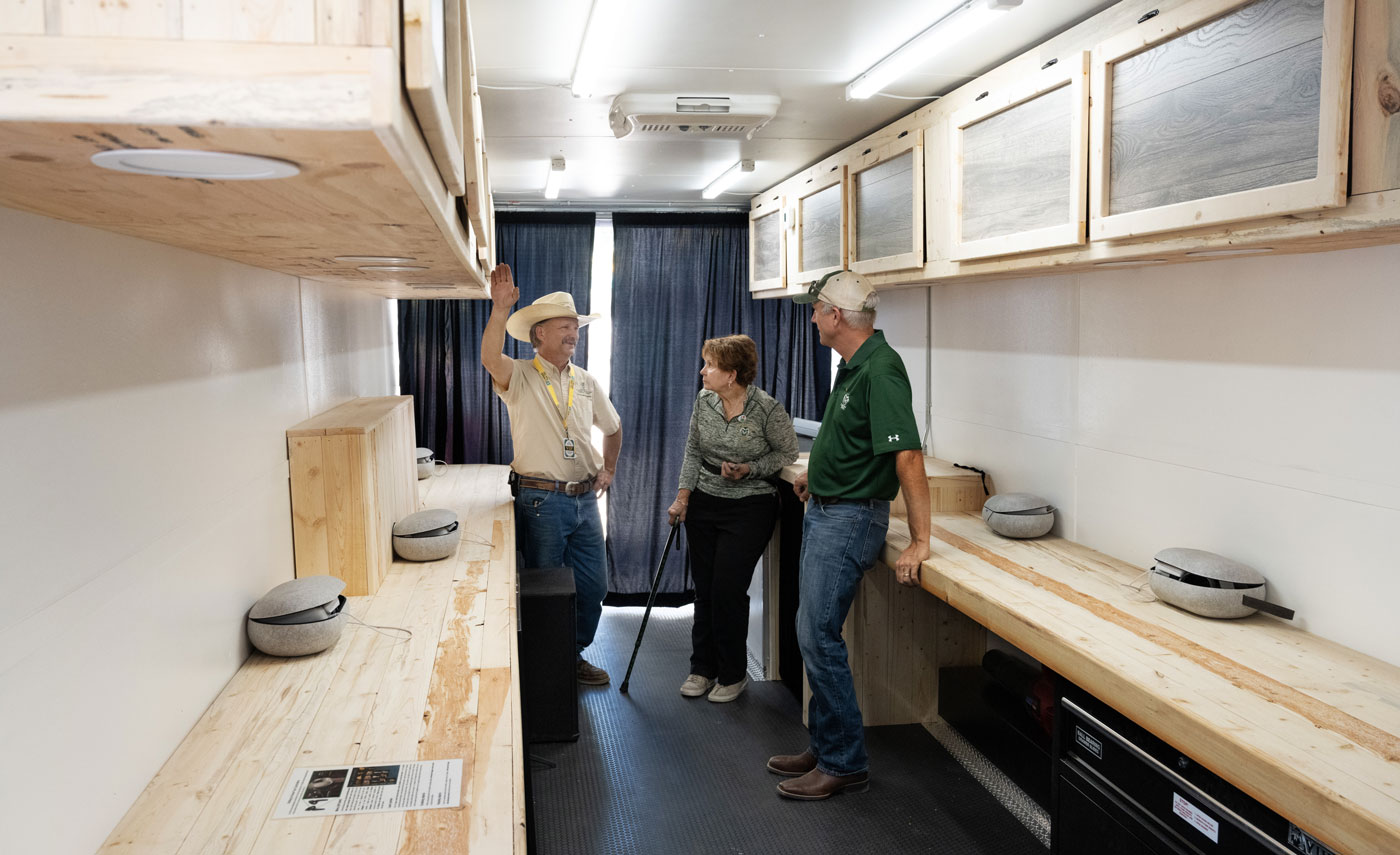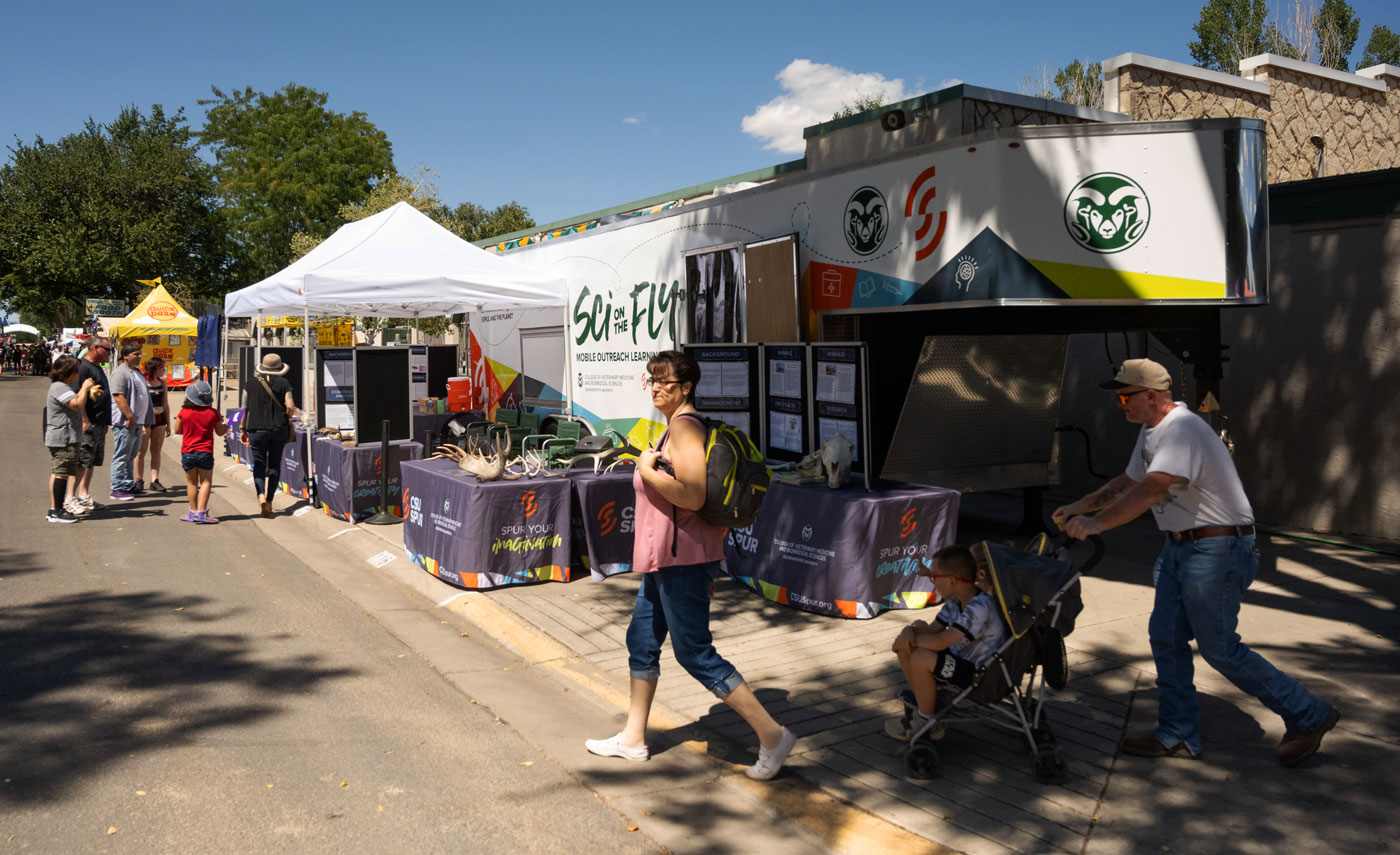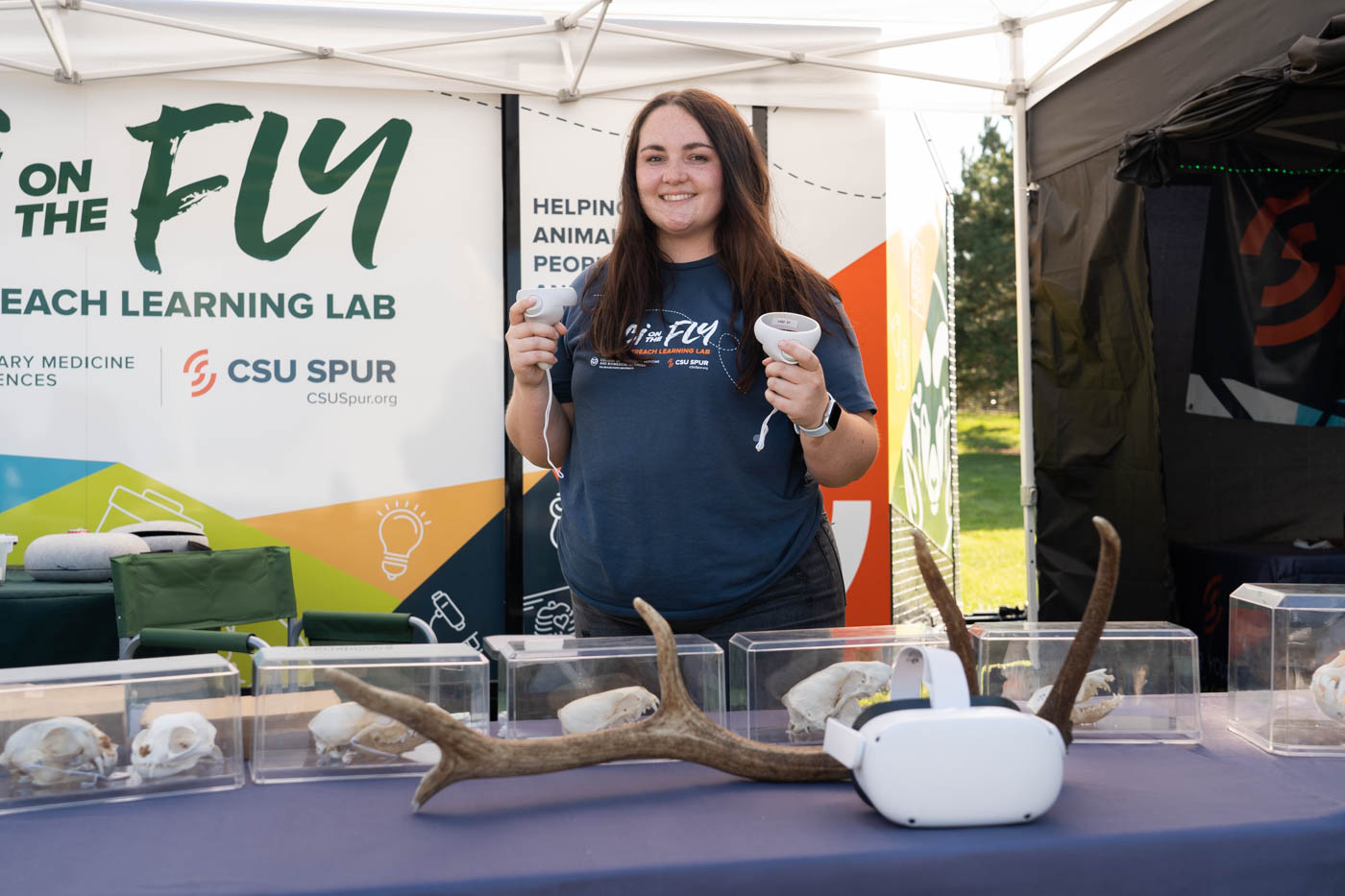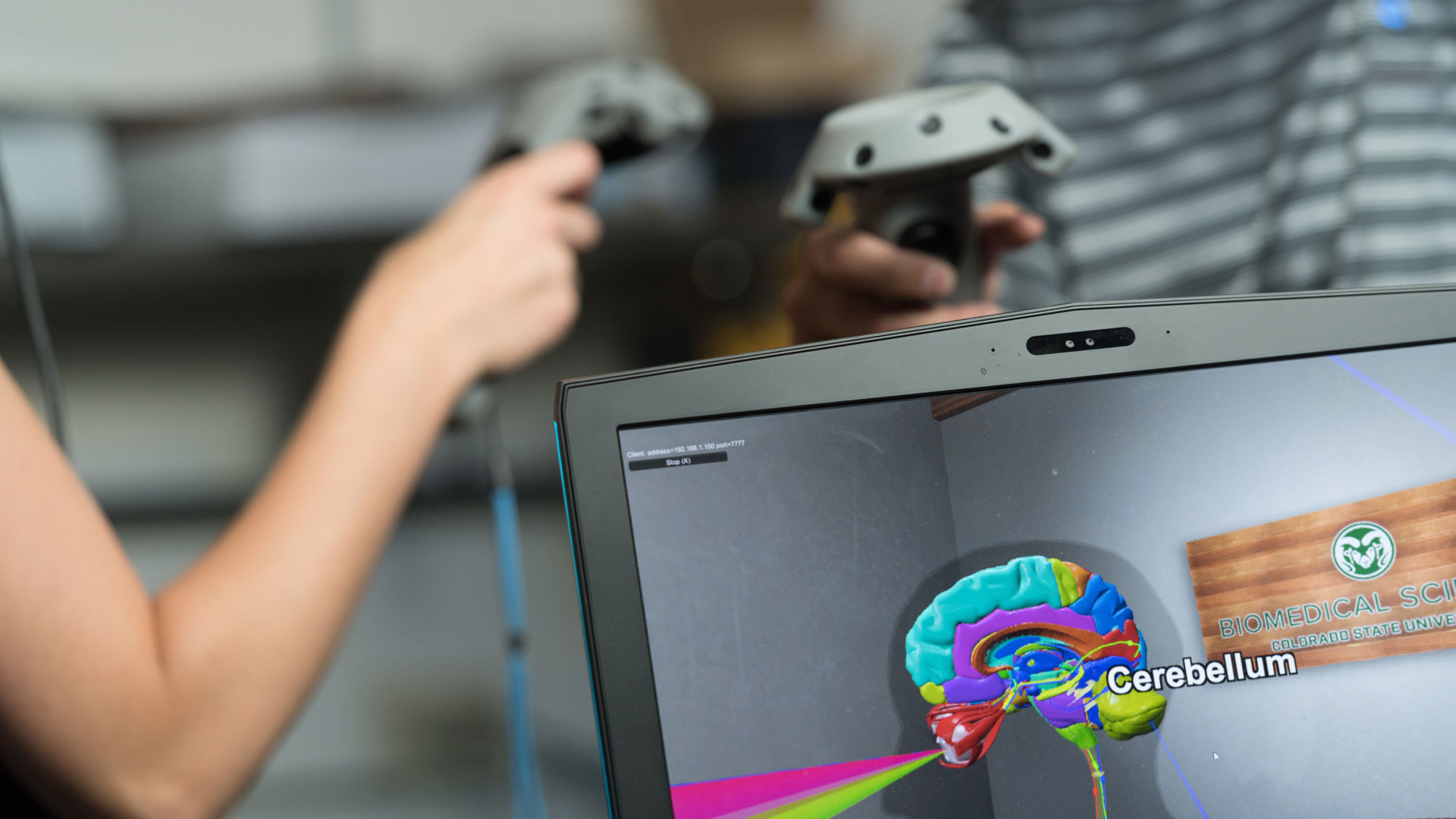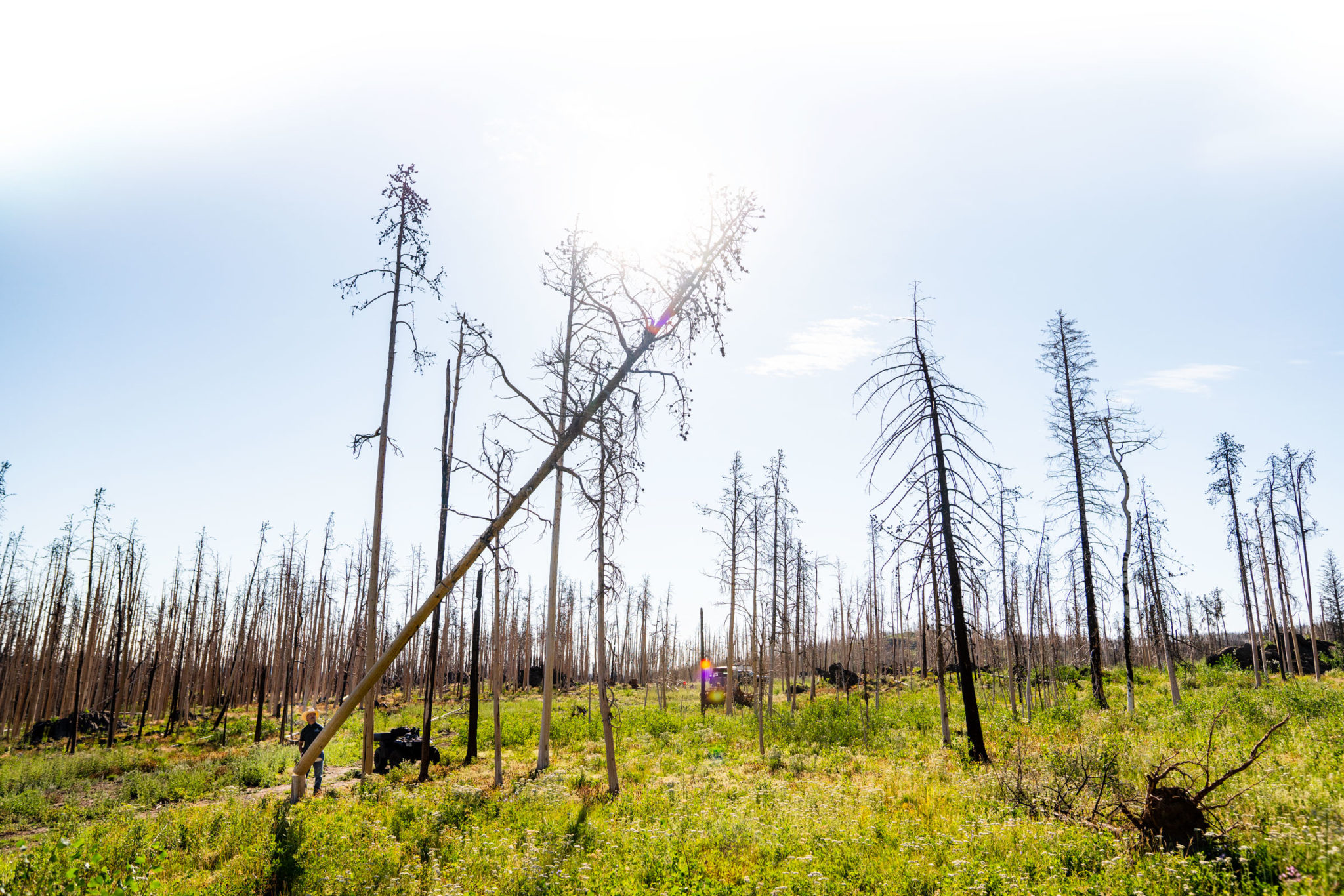
Custom-built mobile VR science lab takes innovative learning experiences statewide
“If you’re not going the extra mile, then what’re you doing?” asks Wade Ingle, stepping gingerly between jagged rocks and over blooming wildflowers on his recently purchased property high in the foothills above Fort Collins.
Two years earlier, the land had been swallowed by the Cameron Peak Fire. At its peak, the raging inferno, accelerated by 70+ mile per hour winds, burned more than 10,000 acres per day for nearly a week as it grew to become Colorado’s largest wildfire.
Surrounded by stands of dead pine trees scorched and stripped of their bark by the fire, Ingle, who serves as the associate director of outreach and engagement for CSU’s College of Veterinary Medicine and Biomedical Sciences, doesn’t just see a scarred landscape, he sees an opportunity to teach people about the way we interact with our environment.
Building connections across Colorado
For the past five years, first with CSU Extension and now with CVMBS, part of Ingle’s role has been building mobile learning labs, packed into trailers, that can be taken to communities across the state.
His latest undertaking, Sci on the Fly, is the largest and perhaps most ambitious yet: a brightly wrapped 37-foot trailer kitted out with virtual reality headsets that let people explore the same human and animal biology programs that CSU students use in the classroom. Soon, a series of eight high-end gaming computers will be installed to run advanced team-based programs focused on teaching youth across Colorado about the deep connections between humans, animals and the environment. Digital microscopes will also be available, as well as additional programming that will highlight career opportunities in virology and anesthesiology.
The Sci on the Fly mobile outreach lab made its debut at the Colorado State Fair in Pueblo.
Surrounding these high-tech learning tools is a physical reminder of this core lesson. The interior of the lab, from its desk spaces to countertops and cabinets, is all built from wood harvested from trees on Ingle’s land that were burned in the Cameron Peak Fire, an event that impacted the lives of thousands of people who had to flee the fire – many of whom lost their homes – and upended the natural systems that supported animal and plant life across more than 200,000 acres.
“Learning starts with the story you tell,” Ingle said. “This experience, and our programming, will broaden youth’s understanding of how the health of people, animals and the environment are all connected, so serving one is to serve them all.”
“The lab is so dynamic it allows us to bring CSU to communities no matter where they are. It breaks down that barrier for folks who are unable to make it to CSU Spur or main campus.”
– Wade Ingle, associate director of outreach and engagement for CSU CVMBS
Feeding young learners’ curiosity
Sarah Haynes, a recent CSU graduate with a BS in Biomedical Sciences, has been supporting the virtual reality outreach efforts of CVMBS and CSU Spur alongside Ingle.
From county fairs to schools, Haynes walks visitors along a table covered in fascinating biology samples sure to spark the interest of even the most shy passersby: antlers, animal skulls – one with its brain still intact! – a set of lungs, snake skin, bisected hooves, and more.
Stick around long enough, or ask, and you’ll have the chance to try out one of her most interesting tools, a small, unassuming headset. Once you put it on you step into a virtual lab where you can manipulate and explore high resolution 3D models of animals’ biology. Soon, visitors will be able to access an interactive human model where you can get hands-on with magnified structures of the human brain and nervous system, as well as visualizing functional signaling of neural networks.
Haynes was in one of the first classes that used CSU’s on-campus virtual reality lab, and it was a bit of a rocky start.
“One of my friends accidentally hit me in the face. She had a headset on and I didn’t,” Haynes said.
But after getting over the learning curve, and figuring out just how much space to give people immersed in virtual worlds, the true value of the technology started to set in.
When the pandemic forced classroom closures, Haynes was able to take a VR computer and headset home. This allowed her to connect in VR spaces with classmates, even hosting office hours as a TA for students who could drop-in and ask questions while standing beside virtual human models.
“When I began taking dissection classes it helped a lot because I’m a very visual learner and think textbooks are terrible,” Haynes said, laughing. “I was able to essentially take a textbook and turn it 3D to study human anatomy.”
Now, Haynes is using her experience to help curious learners of all ages try virtual reality for the first time. According to Ingle, there’s no shortage of eager participants.
“They like it because it’s technology rich and highlights how CSU is broadening its capabilities to teach across the learning spectrum,” Ingle said.
The result?
“We’re booked out into the fall of 2023,” said Ingle, who is fielding requests to show up at schools, non-profits, Future Farmers of America chapters, county 4-H offices, fairs and CSU events.
Expanding access in rural communities
Equipped with a 12,500 watt generator to feed power-hungry computers (and air conditioning), Sci on the Fly will soon be capable of remotely connecting to CSU Spur and other resources in truly remote locations.
“I could park this thing in a corn field, connect to satellite internet, run VR and power all our computers,” said Ingle, who plans to start hosting CSU anatomy and zoology experts virtually to chat with visitors in live video calls.
“The lab is so dynamic it allows us to bring CSU to communities no matter where they are. It breaks down that barrier for folks who are unable to make it to CSU Spur or main campus,” Ingle said.
When youth know that they want to do something to help animals, people or the environment, their exposure to what that actually looks like across career fields can be limited.
“At the middle and high school level, they’re not really familiar with all that biomedical science is,” said Ingle. “So, we bring that to them through experiential, hands-on programming that’s fun, while also providing opportunities to connect with professionals across CSU.”
Sci on the Fly is just beginning its journey to offer unparalleled educational experiences across the state.
“You have no idea the fun we have packed in here. We keep up with the grants and we keep up with the research so that everything is cutting-edge, innovative and always changing,” Ingle said. “This lab is one of a kind and a tribute to CVMBS and CSU Spur’s commitment to the people of Colorado.”
More mobile labs available through CSU Extension
Contact your local CSU Extension office to inquire about scheduling a visit with a mobile STEM lab.
Maker Trailer
Offering programming around woodworking, computer engineering and other skilled trades/STEM activities.
Environmental Sciences Lab
Offering programming that promotes Afterschool 4-H program delivery focusing on environmental science and natural resource management. Sponsored by Colorado Afterschool Partnership.
Career Pathways Lab
Offering programming around computer science, engineering and design. Sponsored by Lockheed Martin.
Energy Lab
Offering programming around energy production and conservation, energy conversions and mechanical advantage. Sponsored by the Colorado Rural Electric Association.
